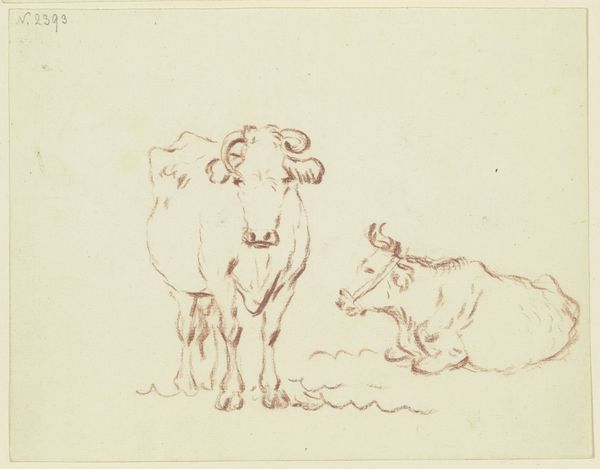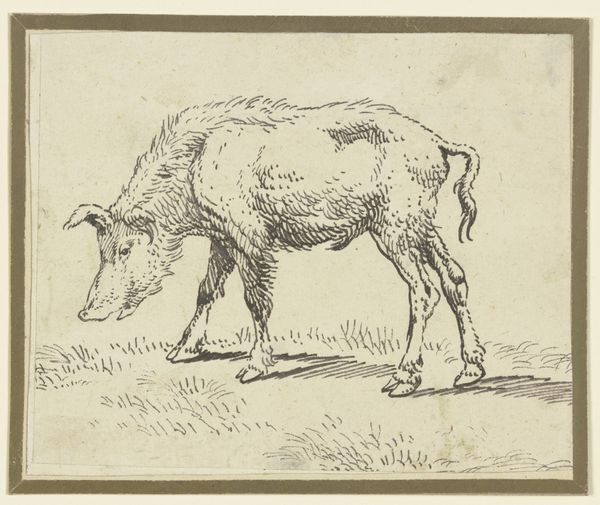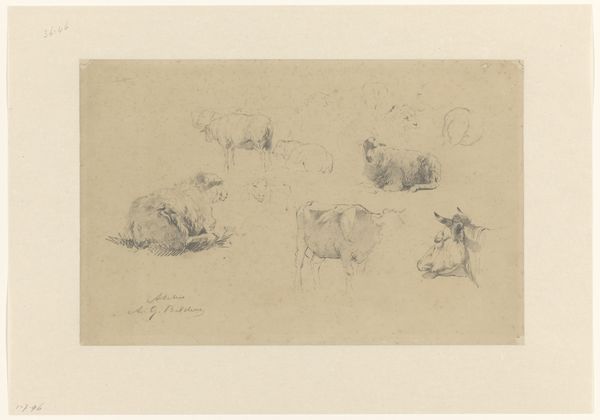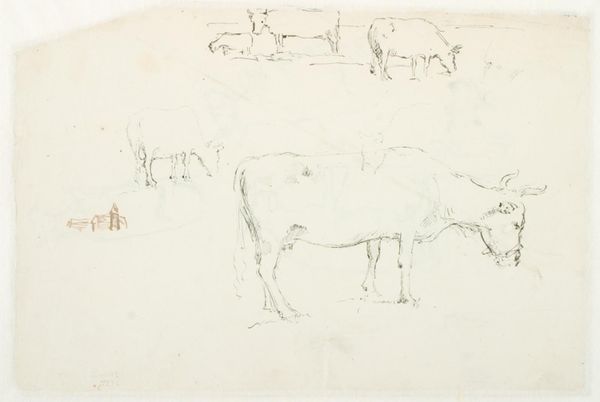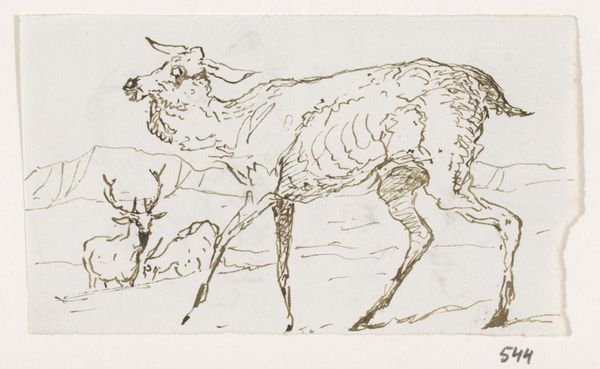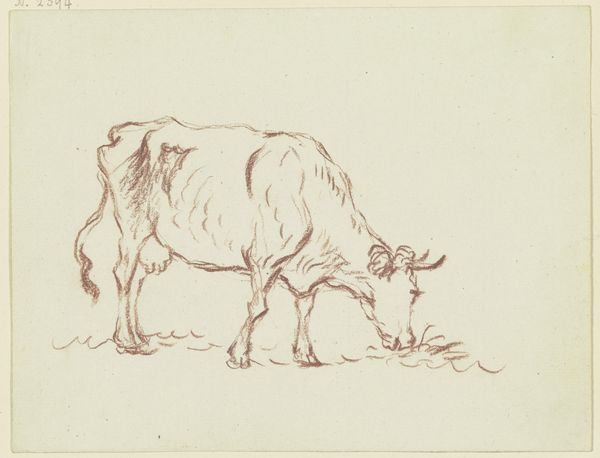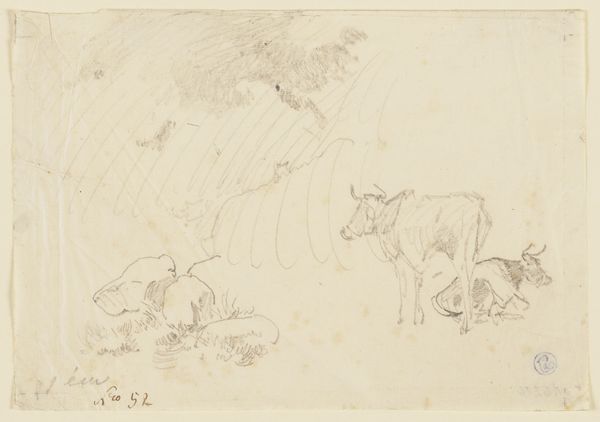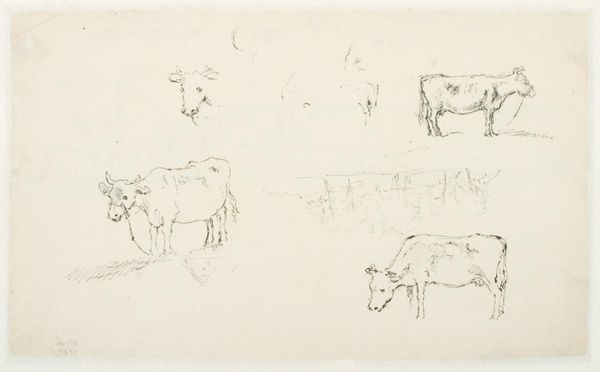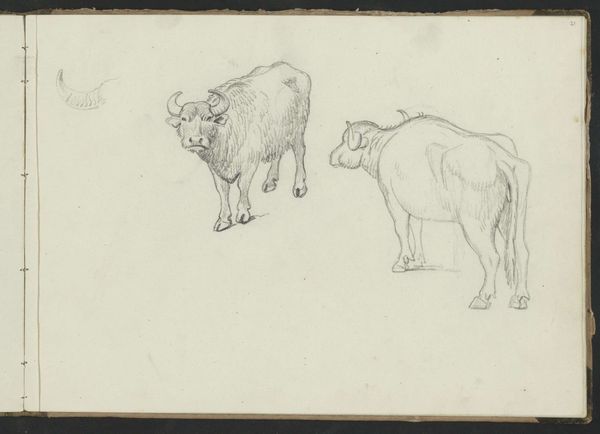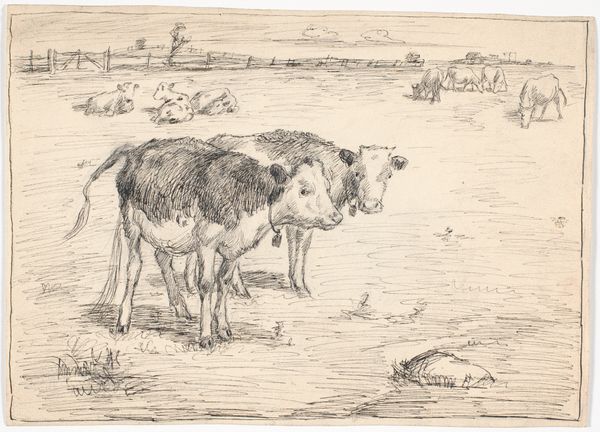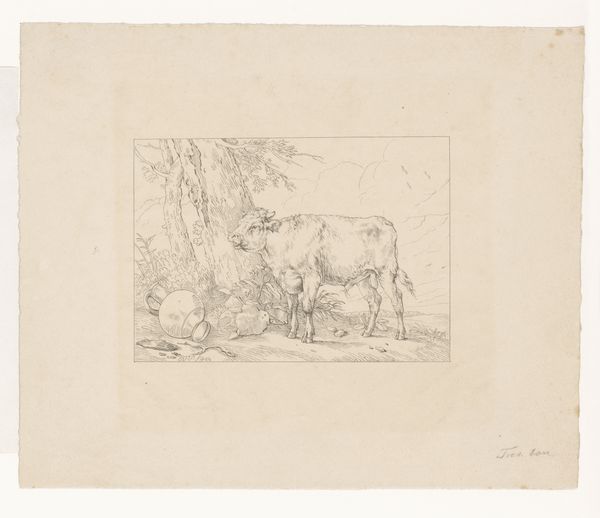
drawing, print, ink
#
drawing
#
animal
# print
#
pencil sketch
#
landscape
#
etching
#
ink
#
genre-painting
#
realism
Dimensions: 344 mm (height) x 210 mm (width) (bladmaal)
Editor: Here we have Carlo Dalgas’s 1921 drawing, “Landskab med et lam og en tyrekalv”—that's "Landscape with a Lamb and a Bull Calf"—rendered in ink and pencil. It has such a light and whimsical air. What do you see in this piece? Curator: I see a poignant commentary on pastoral life, one that both romanticizes and perhaps subtly critiques the traditional gender roles embedded within it. Notice the contrast: the delicate lamb, often associated with innocence and femininity, versus the sturdy bull calf, symbolic of masculine strength and agricultural power. Editor: So, you're seeing a gendered reading of the farm? Curator: Precisely. Think about the period. Early 20th century Denmark was grappling with rapid industrialization and shifting social structures. Dalgas seems to be placing these animals within a narrative about national identity and agricultural labor, hinting at the roles individuals – and perhaps specifically women and men – are expected to play in maintaining that idealized vision of Danish society. How do you read the setting itself? Editor: It seems simple, almost barren, which kind of throws that idyllic expectation a bit off balance, I think. Curator: And isn’t that tension the most compelling aspect? This drawing allows us to question those historical assumptions, examining how gender and labor intertwine with our understanding of nationhood. Editor: That gives me a lot to think about—especially the assumed roles that society can assign. Curator: It highlights the necessity of interpreting artworks like this through the lens of the society that created them.
Comments
No comments
Be the first to comment and join the conversation on the ultimate creative platform.
